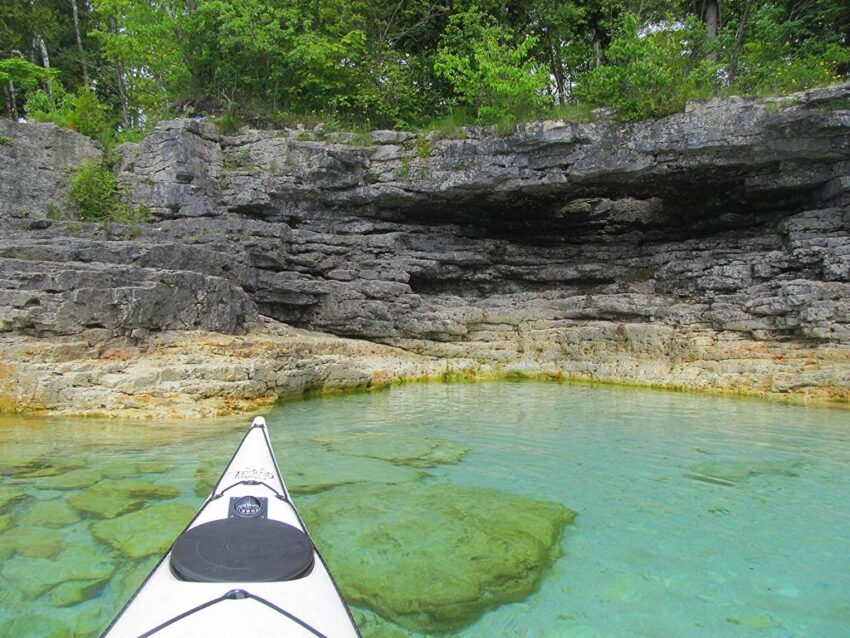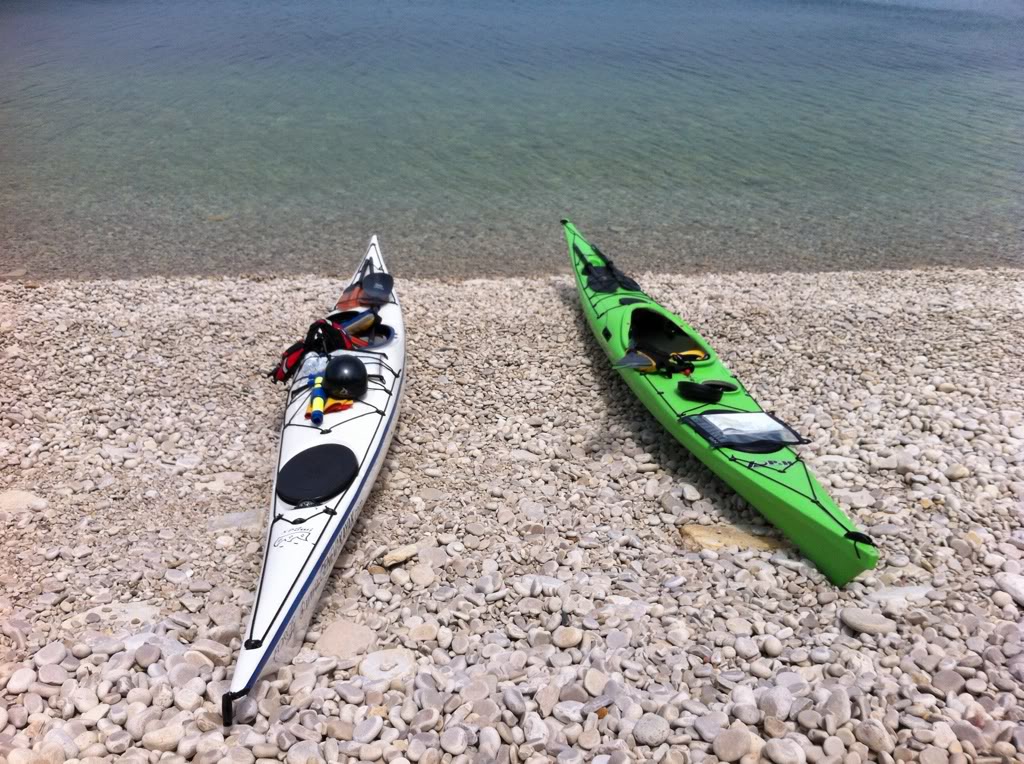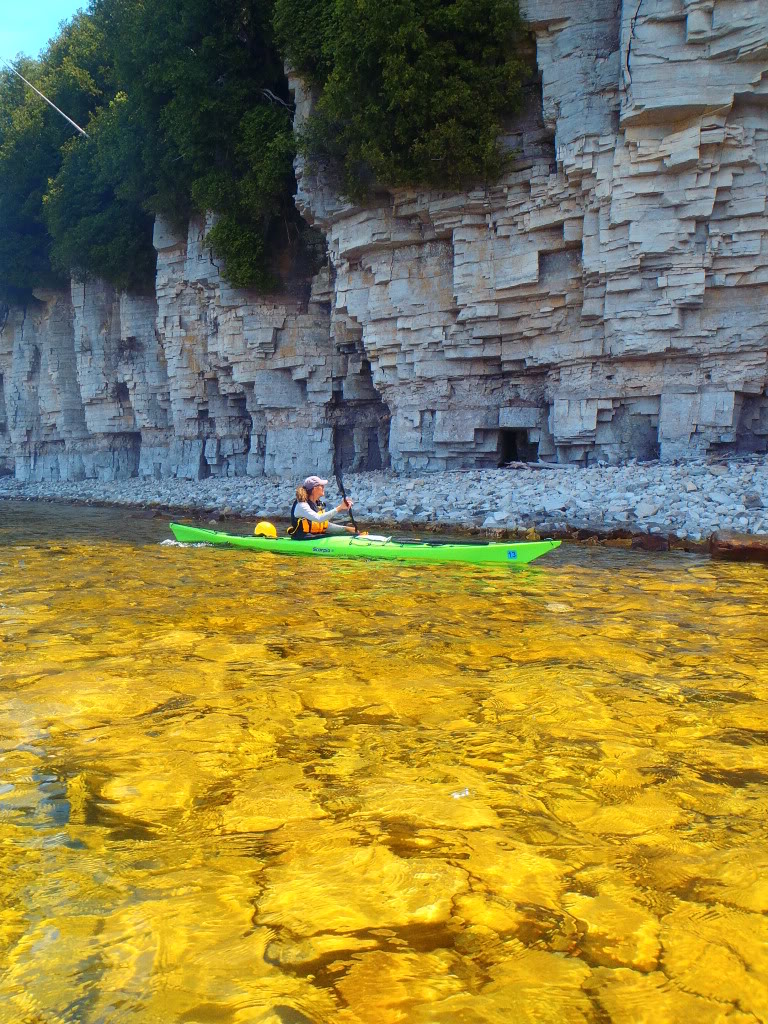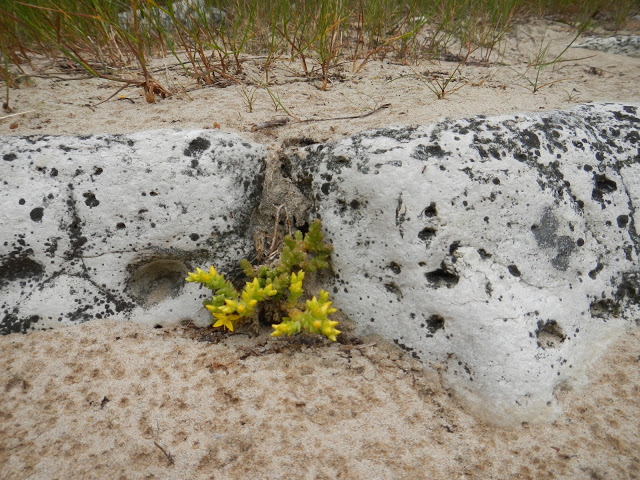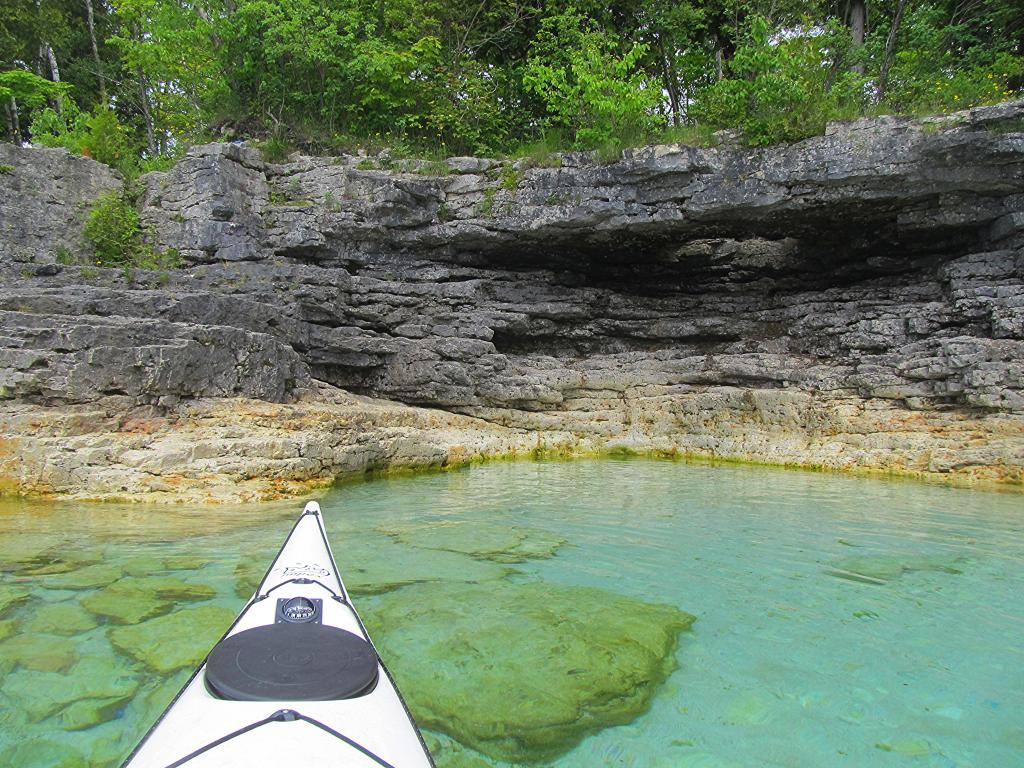Glacial polished dolostone on Schoolhouse Beach, Washington Island, WI.
At one time the whole middle of the North American Continent sank from the Midwest to the Gulf of Mexico. One of the most deeply sunken areas centered in the present middle of Lower Michigan. Gradually this low spot was filled in with about two miles of sediment. This layering of sediment was the accumulation of marine animals dying and it consisted primarily of the shells and skeletal parts of the sea invertebrates. This layer of lime mud is referred to as the Niagara dolostone. Dolostone is 54% limestone and 46% dolomite. (8)
I recently met with a group of geologists, educators, and fossil enthusiasts to celebrate the authoring and publishing of The Mazon Creek Fossil Fauna by the Earth Science Club of Northern Illinois at the home of Charles and Susan Shabica. My husband and I hosted a similar party at our home for the publication of the Richardson’s Guide to the Fossil and Fauna of Mazon Creek by Charles W. Shabica and Andrew A. Hay. Our family enjoyed Mazon Creek events and many rock club field trips with Andy and Don. Don Auler, whose illustrations fill Mazon Creek books, also came to our home to teach our 4 children how to paint.
The earth is not static. With shifting magnetic poles, a partially liquid core and mantle…massive mobile crustal plates, it is a dynamic evolving system. Andrew Young, The Mazon Creek Fossil Fauna, p. vii
At one time sea creatures flourished in a shallow inland sea where a long northern coastline arced through what is now Kankakee, Will, and Grundy counties in Illinois. Mazon Creek fossils are named after the tributary of the Illinois River where they were first discovered. More than 300 animal and 200 plants have been identified from the Mazon Creek area. Because of the unique conditions of fossilization, many soft-bodied organisms that do not usually fossilize are preserved. (1)
Amid the circles of enthusiastic conversations about geology and ancient history, I kept injecting my own enthusiasm with, “I just kayaked there.” I was reminded how much I appreciate being able to explore remote areas in my kayak. Ironically, when we first started collecting the Mazon Creek fossils near the power plant in Braidwood we were never able to reach the islands because we did not have access to a boat. Charles Shabica, a coastal geologist who taught for Northeastern Illinois University, has led geology groups on Cumberland Island and I have circumnavigated it by kayak.
Although the earliest records of the coastal environments in parts of the southeastern United States have been lost due to the continuing rise of the sea, in 1970 an extensive shell midden area with Spanish and historic Indian ceramics was found. The center of the site is 3.6 miles from the NW tip of Amelia Island. The shell midden runs almost a mile along the island’s edge with its south end on the Old Thomas Carnegie family estate of Dungeness on Cumberland Island. (4)
Gathering at the table for dinner, the conversation of our group began to focus on Washington Island in Door County which also happened to be where I had recently kayaked. Door County is named after the straight between the Door Peninsula and Washington Island; Porte des Morts, or “Death’s Door,” which links Lake Michigan and Green Bay between the northern tip of the Peninsula of Door County, Wisconsin, and a group of islands dominated by Washington Island. The area is littered with shipwrecks and is notorious for unpredictable weather that can increase to gale forces and more almost without warning.
The rocks of the Niagara Cuesta were tilted when the Earth’s crust sagged, forming a bowl-shaped depression beneath Michigan. The Niagara Escarpment is the exposed, up-tilted, outer edge of this feature. The once-flat sea bottom deformed into a bowl and only the edges are seen above the ground. The remainder lies buried below several layers of rock. The giant bowl reaches from Wisconsin around the north end of Lake Michigan and Huron to Niagara Falls. The Door County Peninsula and Niagara Falls lie opposite each other on the rim. (7)
Beyond Washington Island is one of the Niagara Escarpment’s longest gaps as it stretches under the waters to Michigan and on to Ontario. The escarpment is a mere 160’ above the lake’s surface, surrounding Washington Island’s wave-battered exterior.
The Byron Dolostone is a basal unit of the Burnt Bluff Group in the Niagaran Series. It is a white to light gray, dense, very finely grained, even-textured, sub-lithographic dolostone that reaches a maximum thickness of 130 feet. Because the rock is so well stratified in even and regular beds, it breaks down into rectangular blocks. (9) These blocks weather into brick-like cobbles such as those on the beach at Schoolhouse beach in Washington Harbor on Washington Island.
Along with exploring the rocky shoreline on Rock Island, the Viking Hall on Rock Island displays Native American artifacts dating back to 1678. Several stone houses can be found on the island, along with the old Stone Water Tower, which once served a fishing village that used to be located on the southeast corner of the island. The campground is located in the area of an old Potawatomi Indian Village and some buildings constructed by the explorer LaSalle. A portion of an old Ottawa and Huron stockade is also located in the campground area.
The earliest permanent settlers in Northern Door County fished, hunted, and traded with local Indians. In 1994 a dig at Nicolet Bay uncovered artifacts dated to the Early, Middle and Late Woodland and Oneota Native American cultures (400BC). Mixed villages of Potawatomi and other native groups occupied Door County and its islands through the mid 1800s.
Modern man is often out of touch with the natural world. We no longer interact with plants, animals, or the environment in ways that allow us to learn and apply scientific principles. What former generations knew about animals because they kept livestock or about the weather because they spent a lot of time outdoors we now have to learn from books.
Scientists take things out of their natural setting and study their parts and details. This fragmenting of something alive can strip it of its allure. A naturalist can study plants, animals, rocks, in their natural settings where he can appreciate its uniqueness, learning its habits, its patterns, and its interaction with other created things.
“The Mazon Creek Fossil Fauna is a complete and updated taxonomic guide that includes descriptions and color photos of species that collectors are likely to find in the field or see in most large collections. This book was conceived by the Earth Science Club of Northern Illinois (ESCONI) as a continuation of earlier publications on the subject. It represents an evolution of Mazon Creek works published by ESCONI, including two books by George Langford, Sr. (1958 and 1963) and, more recently, Keys to Identify Pennsylvanian Fossil Animals of the Mazon Creek Area, by Andrew A. Hay, et al. (1989). For more than 60 years ESCONI has supported Mazon Creek collecting, museum accessions, and research.”
Forward by Charles W. Shabica, Emeritus Professor,
Northeastern Illinois University,
Chicago, Illinois
Study nature not books– Louis Agassiz
Notes
1. Mike Sula, The Vanishing Mother Lode, Chicago Reader; 7/1/04.
2. Elizabeth Harmon, Fossil Hunters Dig the Past in Illinois or out West, suburban residents seek bits of history, Arlington Heights Daily Herald; 7/3/03.
5. Roy Lukes, Caves Give History, Geology Lessons, Door County Advocate; 9/10/99.

